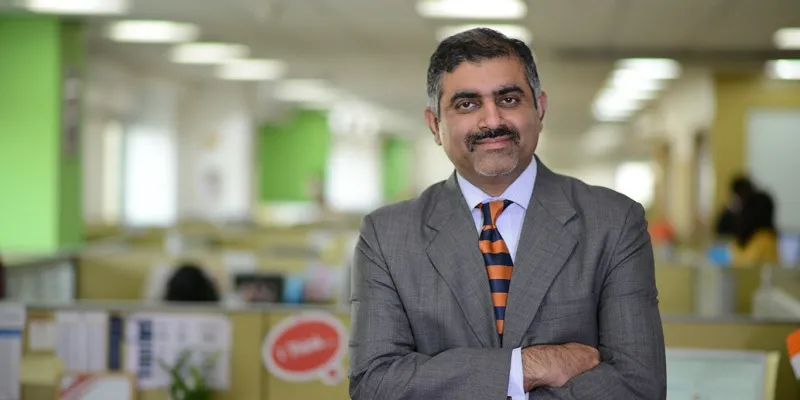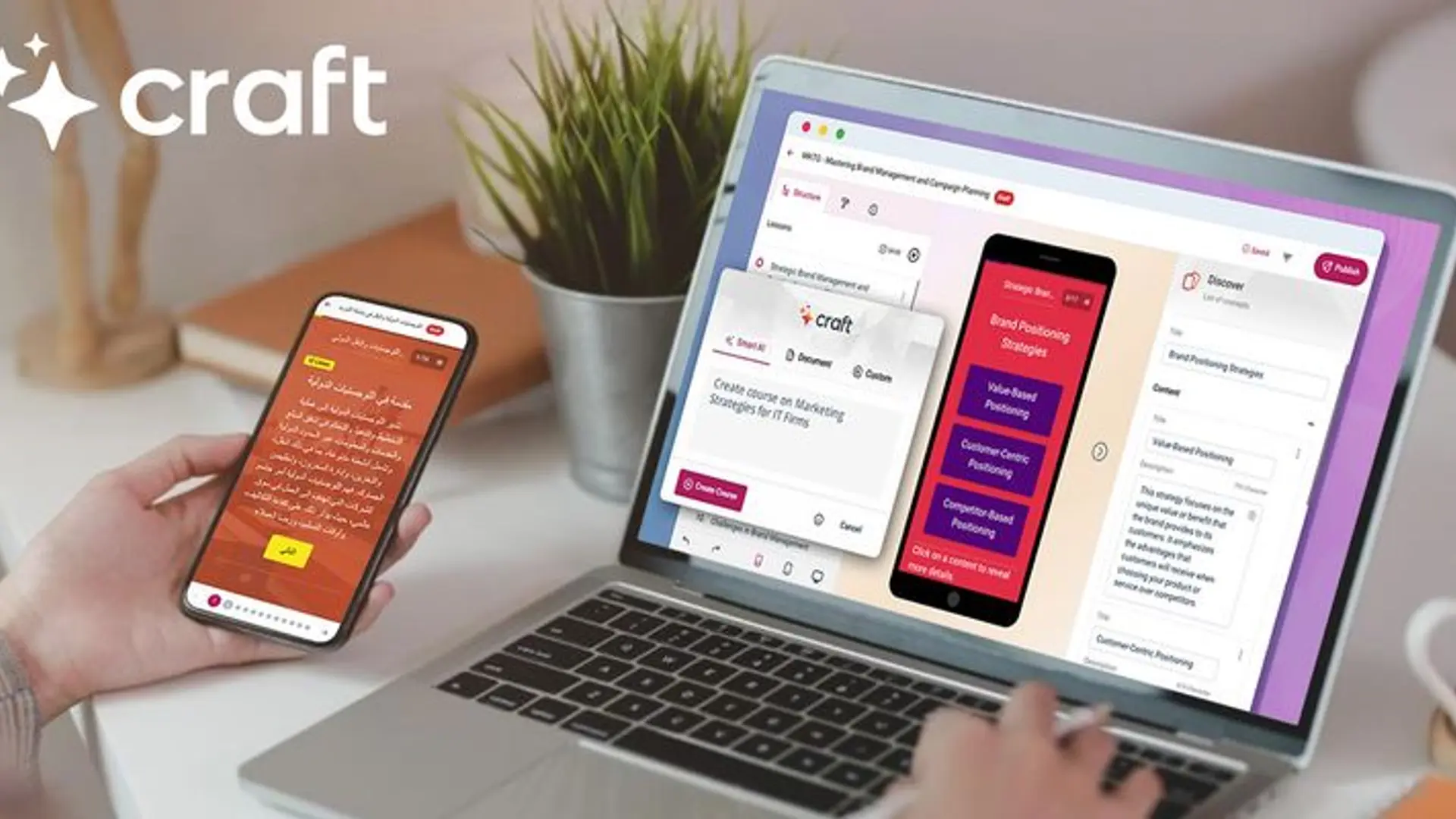[Big Interview] Want to know what Flipkart is up to next? COO Nitin Seth gives a sneak peek
Flipkart's Chief Operating Officer talks about the company's perception struggles, competition with Amazon, and future strategies in a candid interview.
As Flipkart celebrates its 10th birthday, the question on the minds of most e-commerce watchers is what the company will do next. YourStory caught up with Flipkart’s Chief Operating Officer Nitin Seth to find out just that.
The former McKinsey executive joined the Bengaluru-based e-commerce behemoth last March as its Chief People Officer, and took on his current role this January. In a detailed interview, Nitin spoke about Flipkart’s perception problem, organisational challenges, focus on grocery and furniture categories, and on innovating for growth.
Edited excerpts:

Q: What has Flipkart done right in the last 10 years?
Nitin: What Flipkart has done is develop the e-commerce industry in India. The e-commerce industry is still at a nascent stage in India. Total retail is worth $600 billion and only two percent—about $12 billion—is online. This is fundamental to how we think about Flipkart and its strategies. It’s still very early days because e-commerce is small. Flipkart helped put a spotlight on it.
E-commerce in India is not the same as that in the US, China, or any other market. Retail in India is highly unorganised. Hardly 10 percent is organised, whereas it is 80 percent in the US. Digital payment is a recent phenomenon; it’s still a cash-driven market. There has not been large-scale organised logistics beyond the top cities. There are many unique aspects to doing business in India. What Flipkart has done extraordinarily well is that we have solved India-specific problems with India-specific innovations.
Pretty much every major innovation that happened in this industry in the last 10 years has been pioneered by Flipkart, but it is not recognised enough. Flipkart has not been given credit for that. It is a perception issue—that the foreign giant, the number-two player, is doing it. Early growth of the industry was due to cash on delivery, which we pioneered. We built 30-day returns to build trust. Today the largest driver for the industry, not just Flipkart, is mobiles. How did the mobile revolution happen? We pioneered mobile exclusives to deliver high-quality phones at very different price points. The whole notion of a Big Billion Day Sales—our competitors are tagging on to that brand name.
We have built the largest supply chain in the country in-house. Recently, to ensure affordability, we introduced product exchange. Recognising that India has poor internet access, we built the world’s lightest e-commerce apps.
The growth of the industry is all about these India-specific innovations. The growth of this industry is not linear. Once Flipkart does something, a peak happens. Then there is a new baseline, and again innovations happen.
Our biggest contributions are the many India-specific innovations which have become industry standard. Once we do an innovation, the global competitor is also copying it. There is a perception issue—people are not aware of it.
Q: Where do you think Flipkart has fallen short?
Nitin: I don’t know if it is falling short. But there is a natural pace at which you grow a market. From a business perspective, we could have done this differently. What are the strategy questions we solve? ‘How do you grow the market?’ was the question we faced. I don’t think we could have done that very differently. But building our organisation could have been done better. The organisation grew rapidly. In 2015, we grew rapidly, we brought in a lot of new senior leaders. In hindsight, it was too much of a shock to the system. The deep-rooted entrepreneurial culture at Flipkart was affected because of the magnitude of these shifts.
A large part of 2016 was taken to do corrective actions. We went through a lot of pain. But we did it, although we lost some time. In hindsight, we could have done it better. Audacity is deeply embedded in our culture—we take risks, bold steps. But I think what works for the business side does not always work for the organisation side. We are a large company; sudden shifts may not work in it. But I am happy we did that—2016 was our most important year, because we faced challenges and we overcame them. It is the story of how we had a great turnaround.
To build a great company which can survive for 20–30 years, what you need the most is resilience. The business is so unpredictable that it is impossible to say where you could go wrong. It will happen. Your ability to bounce back—for leaders individually and the organisation—is critical.
Q: What are the most important things Flipkart is tackling now to maintain the leadership position?
Nitin: How do you grow the market? The market is at an inflection point. It is moving from stage one of e-commerce to stage two.
From a customer perspective, stage one was largely defined by the SEC-A category where the average income is more than Rs 10 lakh. They are largely from metros and tier-1 cities. Categories which drove them are books, electronics, and mobile phones. The first seven–eight years of the industry were largely about this. We have reached a level of saturation in that stage. So now we are in stage two.
There are not more than 70 million e-commerce customers in India (not just shopping). Active shoppers are around 40 million. We have about 85 percent of the market. This is middle India. With a very different socio-economic profile—SEC B, SEC C—the average income is around Rs 3 lakh. It’s a very different profile, a different income sector, and challenges are also different. Aspirations are high but buying power is not so high. The categories that are relevant for them are also very different. Affordability becomes a key factor. Lifestyle is now a very important category, especially sub-categories with low average selling price.
The most difficult categories are where the battle is. Transaction per customer in India is poor. Customers’ frequency is not too high. What is important for middle India is large appliances (like TV and fridge) and furniture. These are very big categories but are unorganised and have poor proposition for the customer. Nobody has cracked it yet. And finally, grocery, which is the holy grail.
The second point of differentiation— from books and mobile phones, we have reached large appliances, furniture, grocery, and lifestyle. From a reach perspective too, we have gone from metros to tier-2 and tier-3 cities. Last year, more than 65 percent of new customers came from tier-2 and tier-3 cities. Today the bulk of our customers are metro and tier 1 (top 20 cities).
We are focusing on middle India. Our competitor is a lot more focused on SEC A. Propositions like Prime, books, Kindle are very SEC A. At the dinner conversations in Bengaluru, Mumbai, and Delhi, we might take a bit of a beating. But we have market share lead by 22 percent over Amazon, because where the market is, where the real customer is, and in what they are buying, we are absolutely dominant. In two categories which really matter in India today—lifestyle and mobiles—we have 65–70 percent share. Mobile in terms of GMV and lifestyle in terms of units.
E-commerce is too broad—you need a separate strategy for mobile, lifestyle, large appliances, etc. The next categories we are looking to take to the next level are large appliances, furniture, and grocery. All of these have to be driven by India-specific innovations. As long as we are able to maintain that, we will never have a problem. All of these categories are not going to happen by just saying that we want it to happen. There is a huge amount of innovation that we need to do. That’s like a third horizontal for us: innovation is the third part of our strategy. The fourth is around supply chain. It is a key differentiator for us. Supply chain is the key to developing these categories because the way to focus is large appliances, furniture, groceries. All these categories are very delivery-challenge-driven.
One of our strategic objectives is to achieve profitability. Supply chain has a critical role to play in that.
Q: You were talking about growing the industry. But last year the e-commerce industry grew very slowly.
Nitin: Because Flipkart did not grow fast. It’s not like the industry grows, and then Flipkart grows. It is when Flipkart grows the industry grows.
Q: Why is grocery such an important part of your strategy? It is a category that has not been cracked yet, globally.
Nitin: Grocery is important because it is where 60 percent of retail spend—about $400 billion— in the country happens. Everything else follows. Online penetration today is only about 0.1 percent or less. The way we look at strategy is that, in the short term you look at the e-commerce market, how you grow and compete. In the long term, you look at the retail market. Over the long term, all retail categories will move online. In the bigger game, how do I compete? How do I convert more of this $600 billion into online? That’s where grocery comes in.
Q: Do you see people beyond metros shopping for grocery online?
Nitin: You have to splice groceries in e-commerce. You have to look at each of the verticals in e-commerce. For grocery, it is not just one market worth $350–400 billion. There is a market for fresh fruits and vegetables, one for staples, and one for FMCG. The fresh market in India is the holy grail. The formats we have today are very efficient. In staples, there is an opportunity of consolidating demand and doing what we did in mobile phones by growing the market because of our scale. We were able to introduce some mobile phones exclusively in India at a very different price point but with great quality. So a similar logic can be potentially applied to grocery.
Q: When you look at challenges in e-commerce, what’s the biggest? Is it creating affordable products, is it logistics?
Nitin: Top three challenges: affordability—how to drive it for the customer; how you drive value proposition for some of these new categories online—because there has to be a tipping point where the value for the offline customer is so high that they move online. For categories like large appliances and furniture, that is a hard problem to solve. The third is the supply chain to improve customer experience, and drive speed and a lot more efficiency. So those are the three challenges: affordability, developing new categories, and supply chain.
Q: Acquisitions have worked really well for Flipkart in the past. Going forward, will we see more acquisitions happening?
Nitin: We will continue to look at them.
Q: Will you look at technology acquisitions? What kind of companies would be of value to Flipkart?
Nitin: We have an active corporate development team; we are constantly looking at the market. Our larger acquisitions like Myntra, Jabong, and eBay have made a lot more news. It’s not just about acquisitions but also about partnerships. We invest heavily in startups. We keep on looking at the e-commerce value chain. We keep on plotting where we are, and the extensions of the e-commerce value chain, the technologies new startups are coming up with, etc. When you acquire a startup, in a way, you kill that startup.
Q: What are your views on GST implementation?
Nitin: We really believe in God in our country (laughs). For GST, we are as or more prepared than anybody. We have been working on this for a long time. However, it is still scary. The magnitude of change is scary. Let’s see how it turns out.


![[Big Interview] Want to know what Flipkart is up to next? COO Nitin Seth gives a sneak peek](https://images.yourstory.com/cs/wordpress/2017/05/Nitin-Seth.jpg?mode=crop&crop=faces&ar=2%3A1&format=auto&w=1920&q=75)


![[Weekly funding roundup Jan 11-17] VC inflows continue to rise steadily](https://images.yourstory.com/cs/2/220356402d6d11e9aa979329348d4c3e/Weekly-funding-roundup-1670592545805.png?mode=crop&crop=faces&ar=1%3A1&format=auto&w=1920&q=75)

